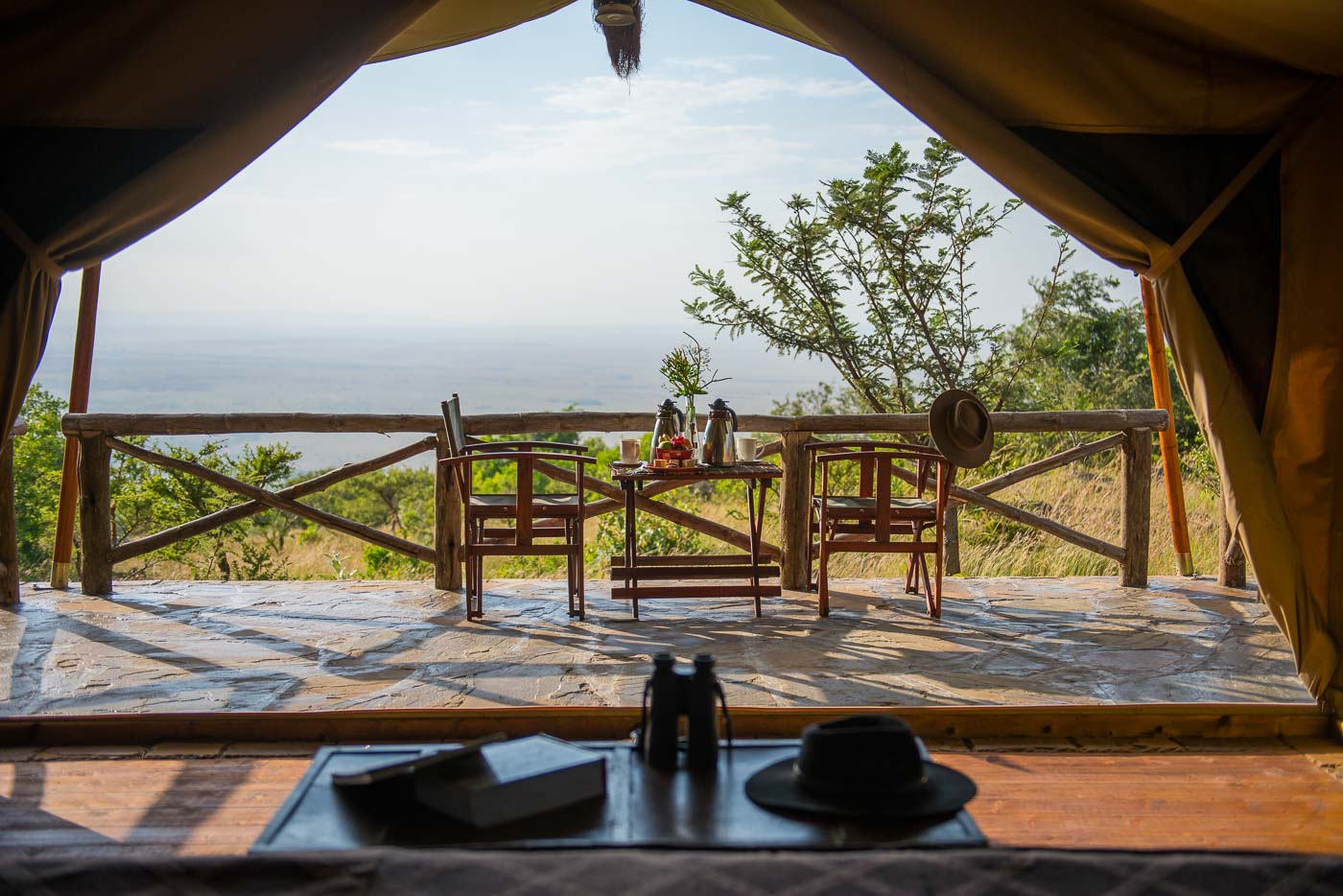I had been told that the view from the award-winning Grootberg Lodge was spectacular, but when I got there it wasn’t. Granted, I arrived there in the dark of night after a dusk drive up Namibia’s Skeleton Coast — part of a custom itinerary organized for me by CW Safaris — and the non-descript patches of nature that I could make out in the near distance were only made visible from the short, confined beam of a flashlight.

However, even without the view of the Klip River Valley yet visible, I was already impressed with this lodge on the edge of the Etendeka Plateau — particularly with its story. Unlike many safari lodges in Africa, Grootberg Lodge has been operated by the local community for almost two decades now, with over 95% of the staff coming from rural villages. This is part of the efforts of the ≠Khoadi //Hoas Conservancy, unifying two thousand local community members who not only operate the lodge and prepare the meals, but run the education and conservation programs to protect the region’s wildlife.

With that said, some members of the conservancy know a thing about animals, especially the desert elephants of their Damaraland wilderness — in fact, “≠Khoadi //Hoas” in the local language of Khoekhoegowab translates to “elephant’s corner.” (The punctuation marks denote different click sounds.) Grootberg Lodge offers elephant tracking excursions for you to encounter them — with the caveat that there’s no guarantee of any actual sightings. Desert elephants are elusive after all.

On the morning I set out to find one of the trunked beasts, I didn’t set my expectations too high. The group that had gone out the day before hadn’t encountered any pachyderm, even after a long day of searching. Driving around in a Land Cruiser, my guide looked for clues in the wild — footprints, the freshness of dung, and impressions in the shrub and trees — just as the guide did the day before without any luck. For a couple of hours, we drove around the desert, shrubs, and thickets — two hours seemed like an eternity without a sighting — until, around a bend, stood an old lone bull munching on a tree.

Being only several yards away from him was a thrill, but my guide suspected he wasn’t alone and assured me that others had to be nearby. With a little more driving, we encountered the rest of the herd: young elephants, mothers with their babies, all getting in their morning routine and making their way across a valley. Driving in slowly and cautiously, we had quite an intimate experience with the herd from the safety inside our vehicle. In fact, a few curious elephants curled their trunks on our antenna, trying to play with a big, unusual metal creature.

Close encounters weren’t exclusively animal affairs in Damaraland. For me, nothing could have been more intimate than watching an old tribal elder woman in a hut, “bathing” herself in incense. However, this was not an act of perverted voyeurism; it was part of another excursion you can arrange from the Grootberg Lodge, where guides bring guests to see how one of the few remaining traditional tribes around live: the Himbas. The incense, along with otjize — a natural all-body ointment made with ochre and butterfat — keep the tribespeople clean while protecting them from mosquitoes and the sun.

Because of their nomadic behavior, the Himbas’ aren’t always in the same place, but fortunately venturing to them in a gas-powered vehicle can get you to wherever they relocated on foot. When stationary, the tribal community maintains their traditions: cattle farming, building shelters from mud and cattle dung, and their traditional attire and dance. The Himbas I visited performed their traditional dance for our group, which was like a Soul Train dance off. From my observations, the women dominated.

With these tribal visits and tracking excursions for elephants — or rhinos if you wish — you’d think there was plenty enough for me to be impressed with at the Grootberg Lodge. However, back at base, when I gazed out from the veranda of my solar-powered hut with a comfortable bed, nothing beat the view of the Klip River Valley — that is, when it was finally illuminated by the sun. With a poolside view like that, it almost made me forget that there were excursions available.

















